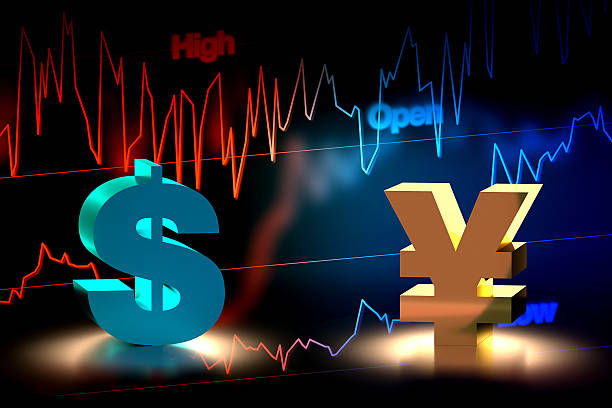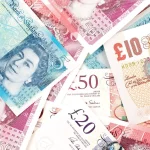USDJPY hits a new YTD high and is poised to be higher. Fed officials pushed for higher rates. The USDJPY increased to above 135.00. Since the USD breaks upward before a long weekend in the United States, the Japanese Yen is facing new fundamental and technical challenges.
USDJPY in a positive trajectory
On the final day of the week, the USDJPY pair makes a significant upward move and reaches a level not seen in nearly two months. As a North American session begins.
Now, the pair is hovering around the psychological value of 135.00. Also, it appears ready to expand on the recent upward trend observed over the past 2 weeks or so.
The initial decline from the preceding weekly top edges of 132.90 on the USDJPY is extended. And a bearish chart formation called “Double tops” is formed.
The RSI (14) line’s U-turn towards elevated levels and the negative MACD indications both support the Yen duo’s most recent downturn.
Fundamental Perspective
The USDJPY recovers from its intraday low but is still trading at a slight loss near 132.00 in the early morning hours of Tuesday am in Europe. Before the Japanese government’s statements of Bank of Japan (BoJ) officials sparked hardline fears and impacted on the rates.
BOJ statements creates jitters. As, the Japanese government’s statements of Bank of Japan (BoJ) officials sparked hardline fears and impacted on the rates.
The broad US Dollar decline as traders prepare for a favorable surprise from the American Consumer Price Index (CPI) for Jan helps the USDJPY bears.
Japan’s fourth quarter (Q4) Gross Domestic Product (GDP) figures initial readings early in the day showed a range of results. After that, the USDJPY prices were affected by Kazuo Ueda’s official nomination as BoJ leader.
Thanks to positive US statistics and hawkish Federal Reserve policymakers, the US dollar earned its third successive week of gains. This week’s US PPI indicated that inflation is still a concern. In this week’s US PPI indicated that inflation is still a concern. The Dollar Index (DXY) increased after James “Jim” Bullard indicated he wouldn’t exclude a 50bps increase in Mar.
The BoJ cheap money may be troublesome in future
The Bank of Japan’s (BoJ) cheap money strategy, however, may face additional problems under the incoming Kazuo Ueda administration, according to a recent study by Bloomberg.
It’s important to remember that Ueda most recently defended the existing monetary and fiscal policy in a talk. The US Federal Reserve (Fed) hawkish, in contrast, hand, persisted in justifying the rate increase worries.
Yet, it appeared that the market’s pricing of slower rate increases and a closer peak weighed on the yields on US Treasury bonds. The yield on US 10-year Treasury bonds consequently falls by about 2 basis points to 3.69 percent. That latest, after turning around from a one-month top the day before.
In other places, new worries about the US-China conflict as a result of the balloon shooting further undermine the mood and support the USDJPY rate.
According to US Senate Majority Leader Chuck Schumer, a bipartisan investigation into mysterious aerial objects that have entered Canadian and American airspace will be conducted by the US Congress.
It’s important to remember that a US military general previously disregarded the possibility that China had anything to do with the “unfamiliar objects” that have been shot down this past weekend.
In this environment, the S&P 500 Futures record modest declines. While the Nikkei 225 of Japan posts intraday gains of 0.65 percent to close to 27,600 by press time.
Moving on, the market opinion predicts a US CPI print of 6.2 percentage – points YoY for Jan. But the likelihood of a positive surprise at the beginning of the year is strong, Keeping USDJPY bears on a precarious level.
Stagflation will drive up the USD even more
The pressure on the world market is still there as rising inflation and rising input costs reduce consumer purchasing power. The business earnings other than a few selected sectors, like the energy sector. The synchronized hardening of economic conditions around the world also increases the cyclical downsides.
Essentially speaking, the United States should remain to be a market with high-interest rates. And, stocks should continue to draw foreign investors. This indicates that the US is likely to draw investment, which normally benefits the USD.
Technical Viewpoint
While the US Dollar index (DXY) was able to reverse the year’s deficits. Thanks to the rebalancing of rate expectations. The major currency duo has been affected by the revival of the Dollar’s strength. Driving prices to a new peak of 135.116 in 2023.
While Kazuo Ueda was nominated on Tuesday as a prospective replacement for Haruhiko Kuroda. The current BoJ (Bank of Japan) Governor. He gave the Japanese Yen a brief reprieve. As, losses were contained as the pair fell to a different level of technical support at the 131.500 mark.
The USDJPY duo has continued to move upward. Since reversing over the 61.8 percentage-point Fibonacci of a 2020–2022 advance at 132.554. Driving price action above the prior January high at current support of 134.774.
The likelihood of higher rates could keep supporting the Dollar Yen’s strength. If prices hold above this mark and keep climbing over the psychological band of the 133.00 mark.









